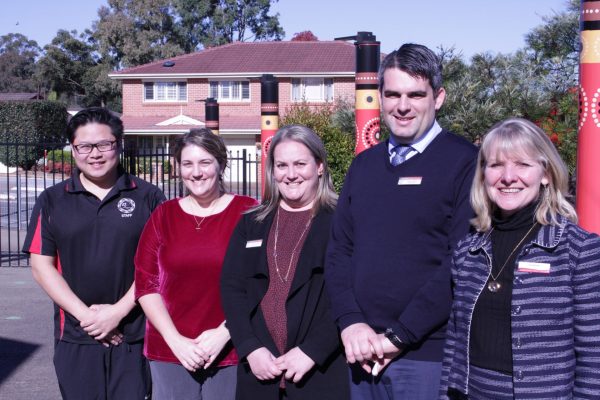Assistant principals Dina Vavdinos and David Shaw are driving the Quality Teaching Rounds professional development program at Hambledon Public School, in Sydney’s Quakers Hill.
The experienced teachers were the first from their school to attend QTR workshops and are now mentors for others taking part right across the school in self-directed professional learning communities.
David said placing trust in teachers to deliver QTR was part of its strength.
He said teachers had previously done peer observations, but QTR gave them “a guiding structure to have some really robust conversations” about their own and others’ teaching practice.
“The Quality Teaching Model doesn’t work against any of the other programs we’re implementing here or any of the other pedagogies,” David said.
“It applies itself over everything. It gives us a better language and an actual structure to apply to our conversations … it helps us to have a more specific conversation.”
He said, “the beauty of this is that it’s something we can implement from K to 6” and that observations made by teachers in a year 4-5 gifted and talented class were equally applicable in kindergarten.
“Feedback uses explicit quality criteria, and teachers are becoming aware of what role the learning intentions play in the achievement of outcomes,” David said.
QTR is for all teachers
Beginning teachers had “relished the opportunity to be released [from class] to go and look at quality teaching and talk about quality teaching”, but all teachers benefit from QTR, David said.
Dina, a teacher of 16 years, agrees there is plenty in QTR for experienced teachers.
“I can always improve on my teaching,” Dina said. “There’s just so much more that’s evolving and we need to keep up with it and we need to change with it.”
Dina said teaching could be “a very lonely profession. You’re in a room, four walls, and unless you do something like this, you are on your own and there’s no one else.”
Watching other teachers had been valuable for her. “There are things that they are doing that I never would have done before,” she said.
QTR reinforces that, “teaching three or four years, and teaching 16 years, we’re still in the same boat. I might have a few more tricks up my sleeve, but there is value in mixing it all together and sharing that journey and sharing how we’re going through that journey.”
Dina has noticed “increased confidence” in her students. “They are willing to give more things a go, and will use the [QTR] metalanguage … You use words like graphemes and phonemes with them, and they actually understand. And they use those words in their conversations in their literacy groups.”
A focus on quality assessments
David said value and consistency of assessment was a big focus for the school, and the application of the Quality Teaching Model was part of the process.
“We’re asking questions such as ‘Is that [assessment] giving us much information about our kids? Is that promoting higher-order thinking or is that just regurgitation of a whole heap of timetable facts that they know? Are we getting them to apply those skills to another area?’”
Formative assessment is the aim, says Dina: “Our focus is how we can make the assessments quality. Assessment for learning, rather than assessment for assessment’s sake. We’re backward mapping. We’re looking at what we want the children to achieve, then going back and planning lessons based on the high expectations we have for them.”
The school is committed to the ‘gold-standard’ full-day Quality Teaching Rounds and will not cut corners.
They start with a professional reading “to frame the conversation”; do hour-long observations; code lessons individually; and then engage in discussions for up to 90 minutes on the dimensions and elements of the Quality Teaching Model.
This precision gives QTR meaning, Dina says. “It’s not just tick-a-box. It’s actually meaningful to teaching and learning, to what I am doing in the classroom and what I am continuing to do in the classroom.”
Allowing classroom teachers to lead professional learning communities also built their leadership capacity which “really adds to how they feel, and how they’re valued”, Dina said. “It has opened up a whole new pathway for professional relationships and discussions.”


